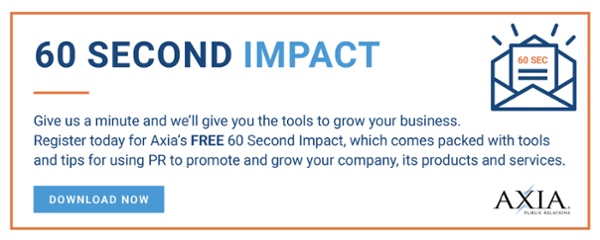Three helpful tips on how to enhance your overall online user experience
 It’s no secret that the key to running a successful business is to provide your customers with the ultimate online experience. Your website or app has the ability to make a lasting impression on a customer, so why not make it a positive one?
It’s no secret that the key to running a successful business is to provide your customers with the ultimate online experience. Your website or app has the ability to make a lasting impression on a customer, so why not make it a positive one?
Before we can elaborate on how to boost your online user experience, we must first go over what user experience is. User experience is the feeling a customer gets after using a website, app, product, or service. Now, let’s go over how to give your users the best experience possible.
Clear Call to Action
A crucial element of your website’s design is a CTA. Every page on your website needs to include at least one. These can include a form, link, or button that brings users to the next step.
Some examples of simple calls to action are: linking services to your homepage, a subscribe button to receive a blog or newsletter, or a link to a contact page with a user form to fill out. Some examples of more complex calls to action are a scheduling tool that allows you to make an appointment online and downloadable files.
Speed
Removing elements that can slow your site down is a great way to improve your user’s experience. Your site not loading quick enough can be caused by high bounce rates for your site. Bounce rates are the percentage of visitors who visit a page and then leave the website.
If your website takes an extra two seconds to load, it can increase your bounce rate by 50%. Some things that can slow down your site include embedded videos, large image file sizes, and an inadequate web hosting server.
Images
One way customers can immediately judge a website is by the images used throughout it. When someone sees generic stock photos instead of more personalized images, he or she is less likely to stay on the site because stock images can fail to create user and brand connections.
Another problem you can run into when using stock images is copyright infringement. Copyright infringement is when a copyrighted work is publicly displayed, reproduced, and distributed without the permission of the copyright owner. We have an On Top of PR podcast episode about this topic.
Applying these tips can help your company reap the benefits, which include lower bounce rates, higher conversion rates, and a stronger following of happy customers.
Amelia is an intern at Axia Public Relations for the spring 2021 semester. She will be graduating in April with a bachelor of science in public relations and a minor in digital marketing. Amelia has a passion for writing and a love of helping others and meeting new people.
Photo by Andrea Piacquadio from Pexels
Topics: online public relations, owned media



Comment on This Article